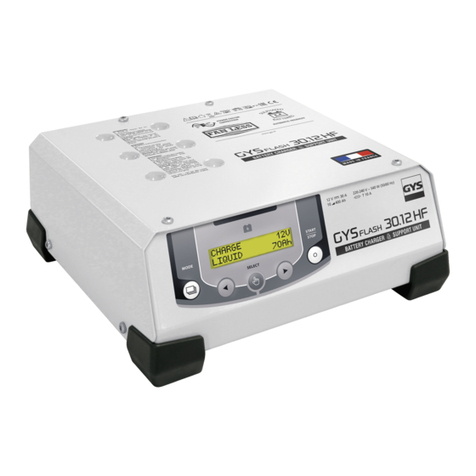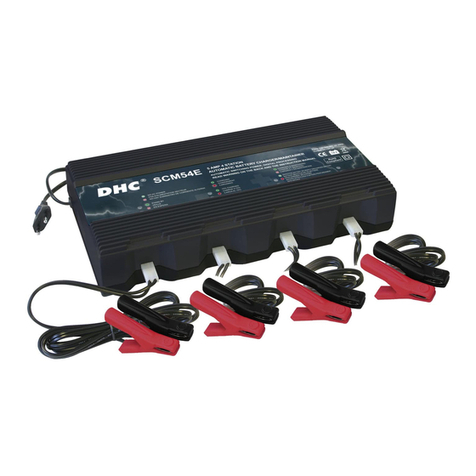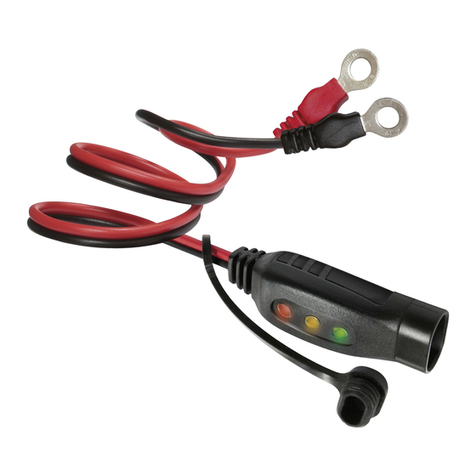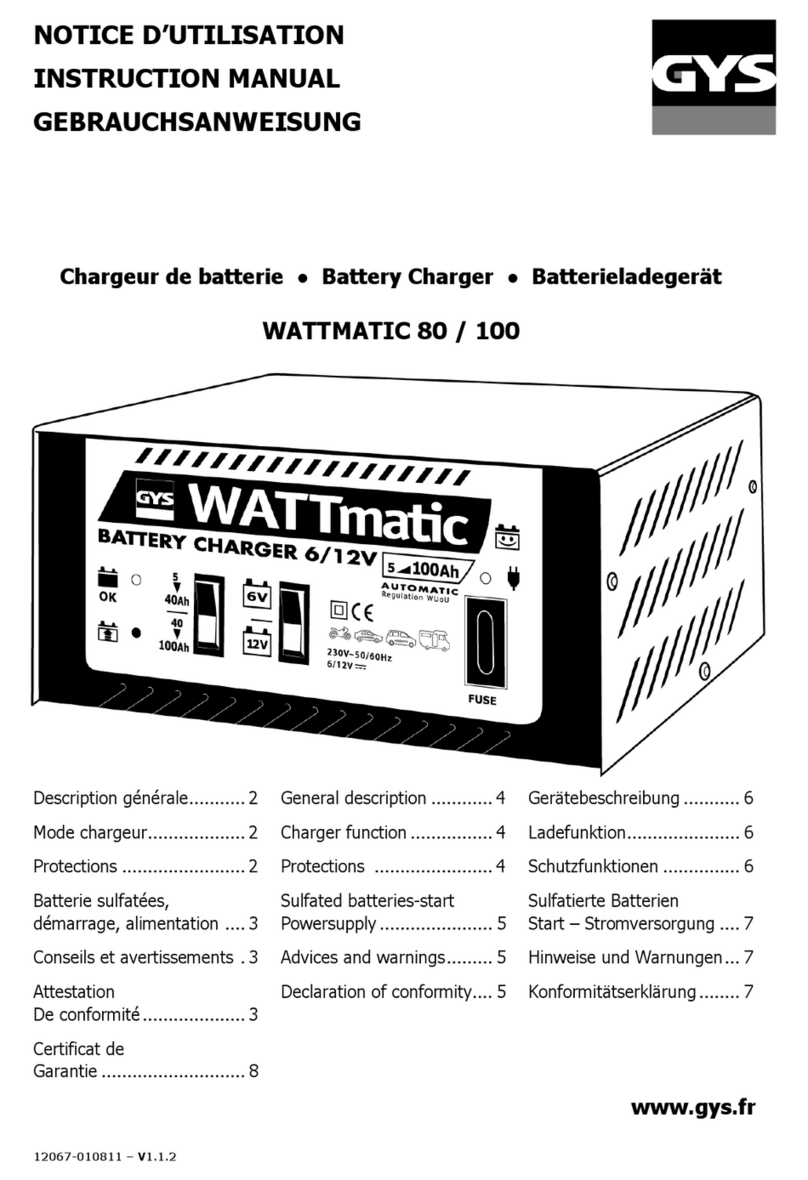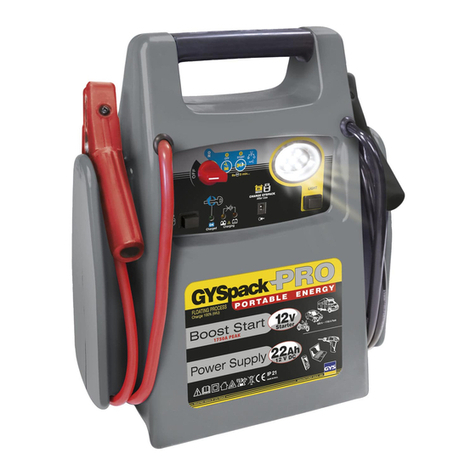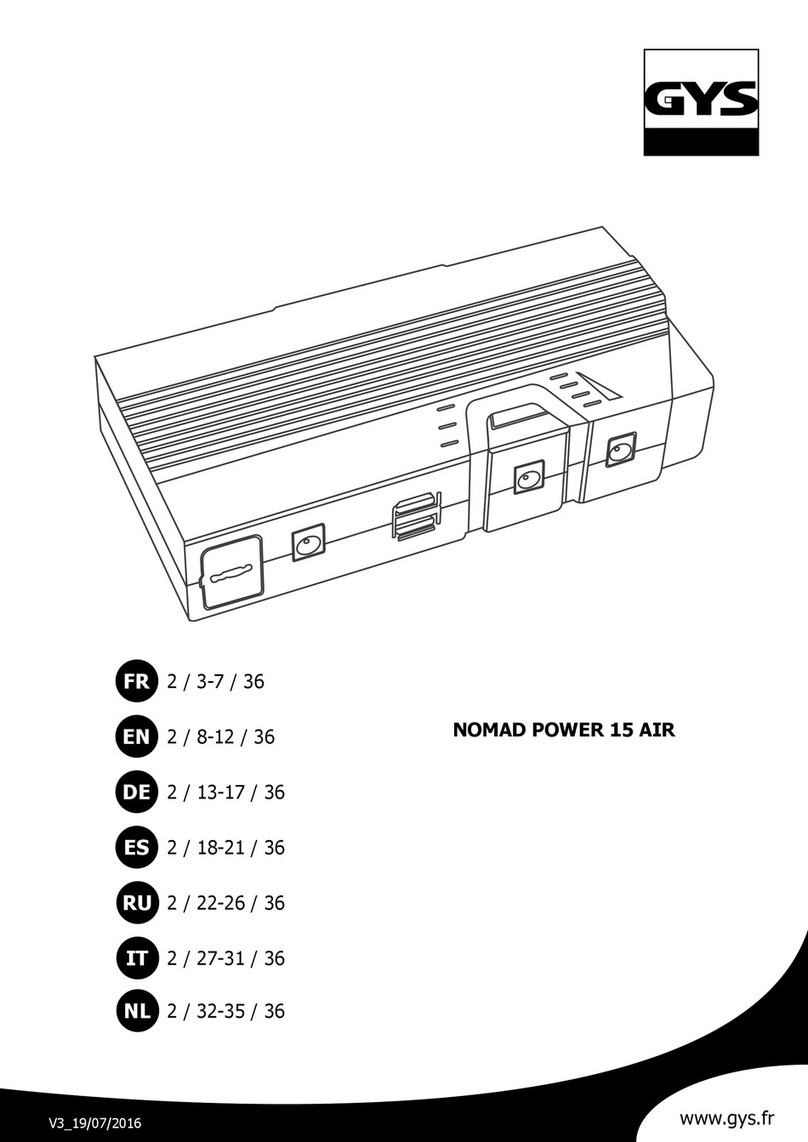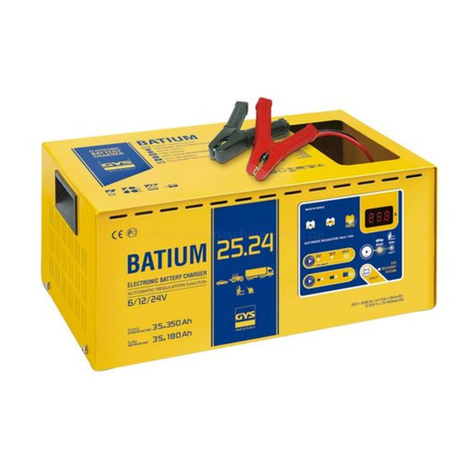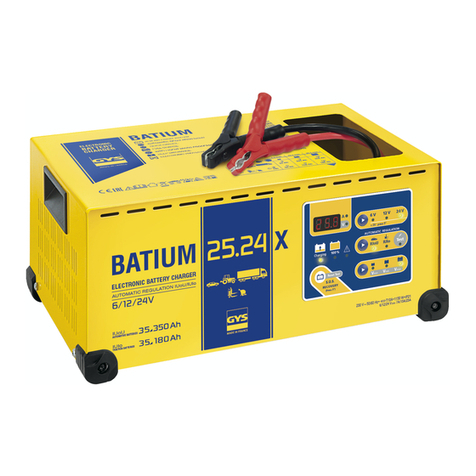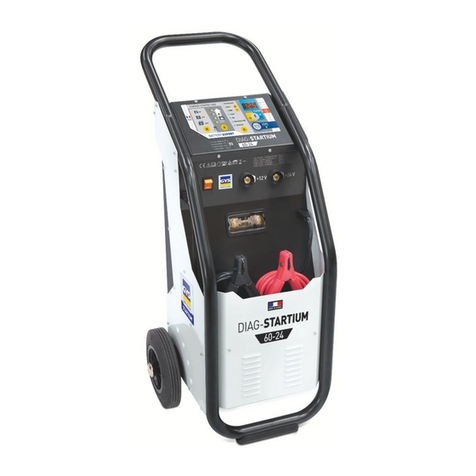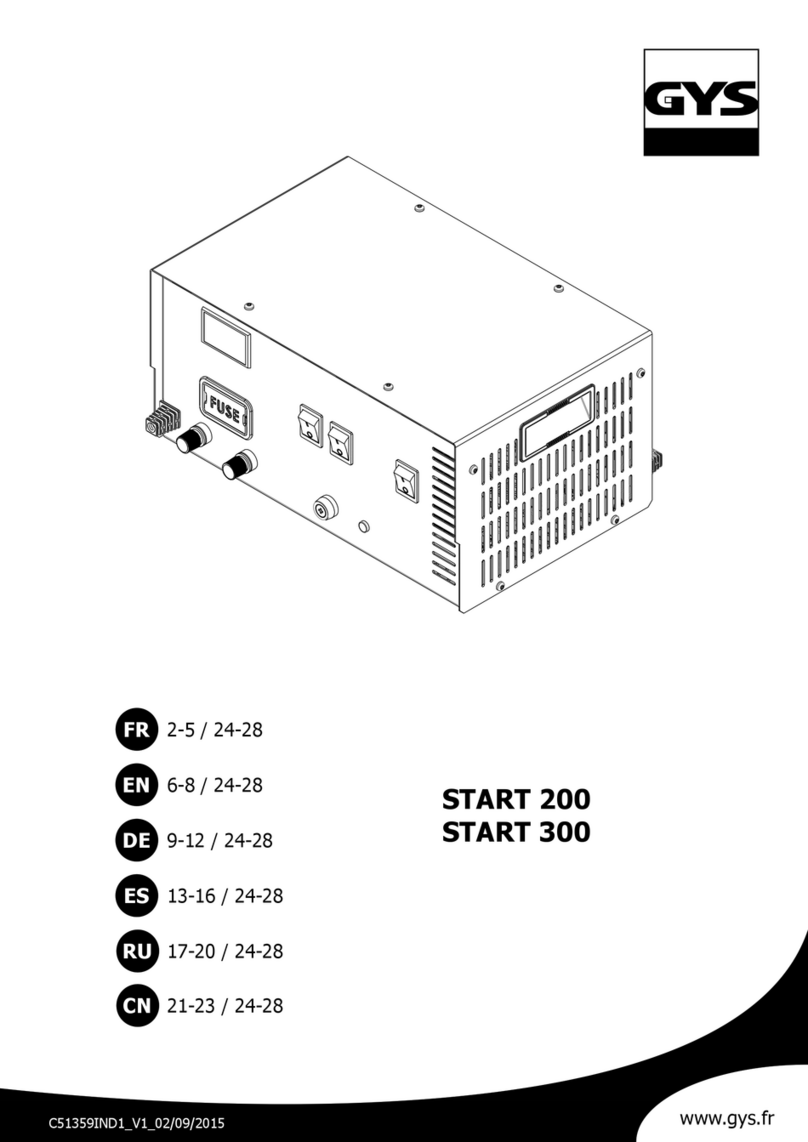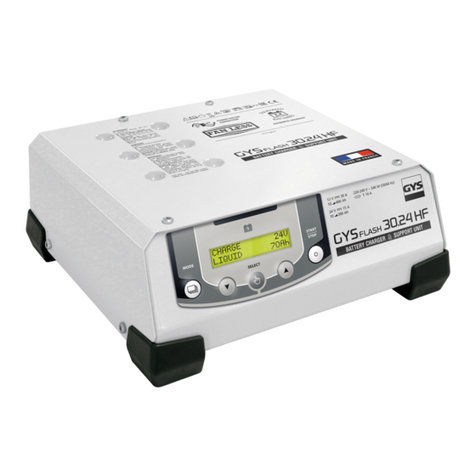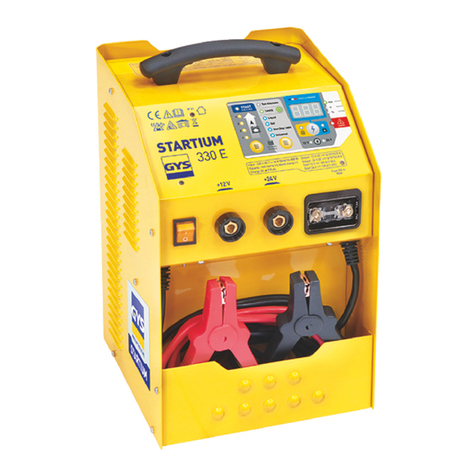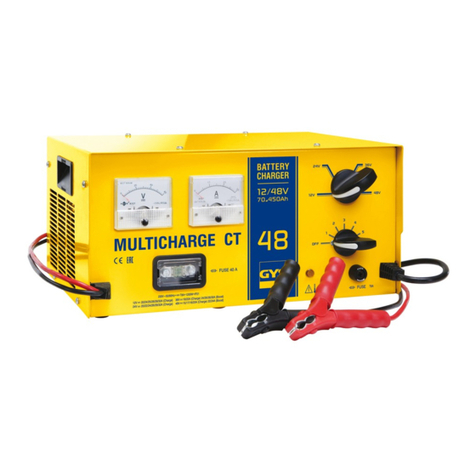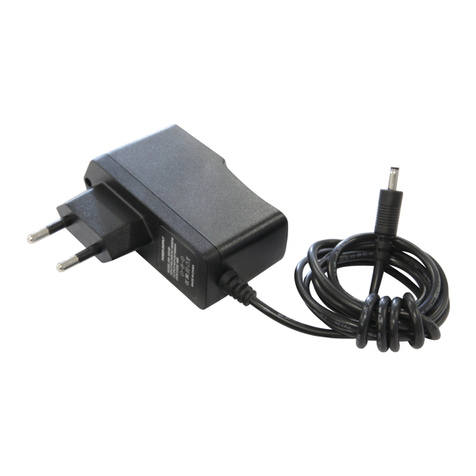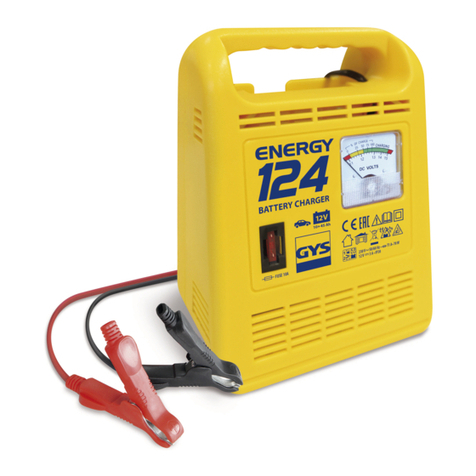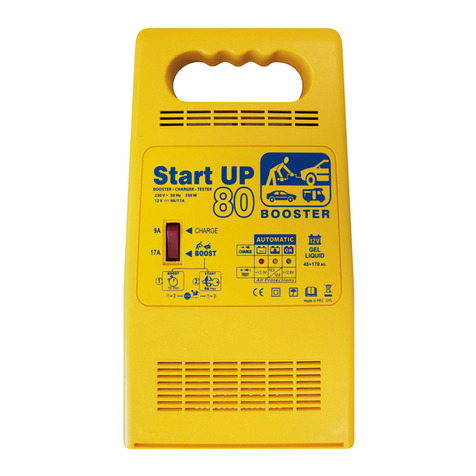
7
TCB 60 / TCB 90 / TCB 120
Schutzfunkti nen
Ihr Produkt wurde mit einer Vielzahl von Schutzfunktionen ausgelegt:
•Die Batterieanschlussklemmen sind isoliert aufgebaut.
•Eine Verpolung verursacht keine Gefahr. Schutz wird durch eine Schutzsicherung gewährleistet,
welche im Fehlerfall ersetzt werden muss.
•Eine Sicherung schützt vor Überstrom infolge von schlechten Batterien oder falscher Anwendung
des Produktes (z.B. langer Gebrauch bei zu hoher Ladeleistung).
•Überhitzungsschutz: Der Transformator dieses Produktes besitz einen Thermoschalter, der sich
beim Überhitzen des Gerätes abschaltet (Abkühldauer: ca. ¼ Stunde)
Sulfatierte Batterien - Start - Str mvers rgung
•Der TBP ist nicht geeignet sulfatierte Batterien zu erkennen. Leuchtet die grüne Anzeige des
Ladegerätes nach dem Anschließen an eine Batterie, ist die Batterie tief entladen und der
Sulfatierungsprozess hat bereits begonnen. Diese Batterie kann nicht mehr aufgeladen werden
und muss ausgewechselt werden.
•Wenn Sie den Motor starten, darf die Batterie nicht mehr am Ladegerät angeschlossen sein.
Andernfalls könnte die Sicherung ausgelöst werden.
•Die Verwendung des Ladegerätes als Stromquelle ist unzulässig.
Hinweise und Warnungen
•Wenn Sie den Motor starten, darf die Batterie nicht mehr am Ladegerät angeschlossen sein.
Andernfalls könnte die Sicherung ausgelöst werden.
•Versuchen Sie niemals defekte oder nicht aufladbare Batterien zu laden.
•Brandgefahr: Vermeiden Sie stets Feuer und Funkenflug und sorgen Sie während der Aufladung
für gute Belüftung.
•Schützen Sie das Gerät vor Regen und Feuchtigkeit.
•Beachten Sie die Anschlussreihenfolge.
•Achten Sie während der Ladung auf einen sicheren Stand des Gerätes und einen frei zugänglichen
Netzanschluss.
•Überprüfen Sie das Gerät regelmäßig auf Schäden, insbesondere das Netzkabel, den Stecker und
das Gehäuse. Ist das Ladegerät beschädigt, darf es vor der Reparatur nicht mehr benutzt werden.
•Ist das Ladegerät und/ oder Kabelleitungen defekt/ beschädigt, geben Sie das Ladegerät zur
Reparatur zum Hersteller bzw. zur Serviceleistung an einen Fachbetrieb.
•Schließen Sie das Batterieladegerät zuerst an den Pluspol (+) an und achten Sie darauf, dass
weder das Ladegerät, noch das Kabel mit der Kraftstoffleitung des Fahrzeuges in Berührung
kommt.
•Ziehen Sie nach Aufladung der Batterie den Netzstecker und entfernen Sie die Klemmen vom
Minus- (Schwarz) und Pluspol (Rot) der Batterie.
•Öffnen Sie nicht das Gerät. Achtung: Änderungen und Eingriffe am Gerät von nicht autorisierten
Personen setzen die Garantie und Konformitätserklärung der Firma GYS außer Kraft.
•Ihr Gerät ist ein Produkt für selektives Einsammeln (Sondermüll). Werfen Sie es daher nicht in die
häusliche Mülltonne.
K nf rmitätserklärung
GYS erklärt, dass die Batterieladegeräte TCB 60 / TCB 90 / TCB 120 richtlinienkonform mit
folgenden europäischen Bestimmungen: Niederspannungs-Richtlinie 73/23/EWG – 19.02.1973
(erweitert durch 93/68/EEC), EMV- Richtlinien 89/336/EWG – 03.05.1989 (erweitert durch
92/31/EEC, 93/68/EEC, 91/263/EEC)-elektromagnetische Verträglichkeit- hergestellt wurden.
Diese Geräte stimmen daher mit den erweiterten Normen EN 60335-2-29 und EN 5501 überein.
CE:GS Kennzeichnung: August 2006.
01/07/06 Nic las BOUYGUES
S ciété GYS Président Directeur Général/ CEO
134 BD des L ges
53941 Saint Berthevin
GYS China
669 Liany u r ad, Minhang
201107 Shanghai - China
